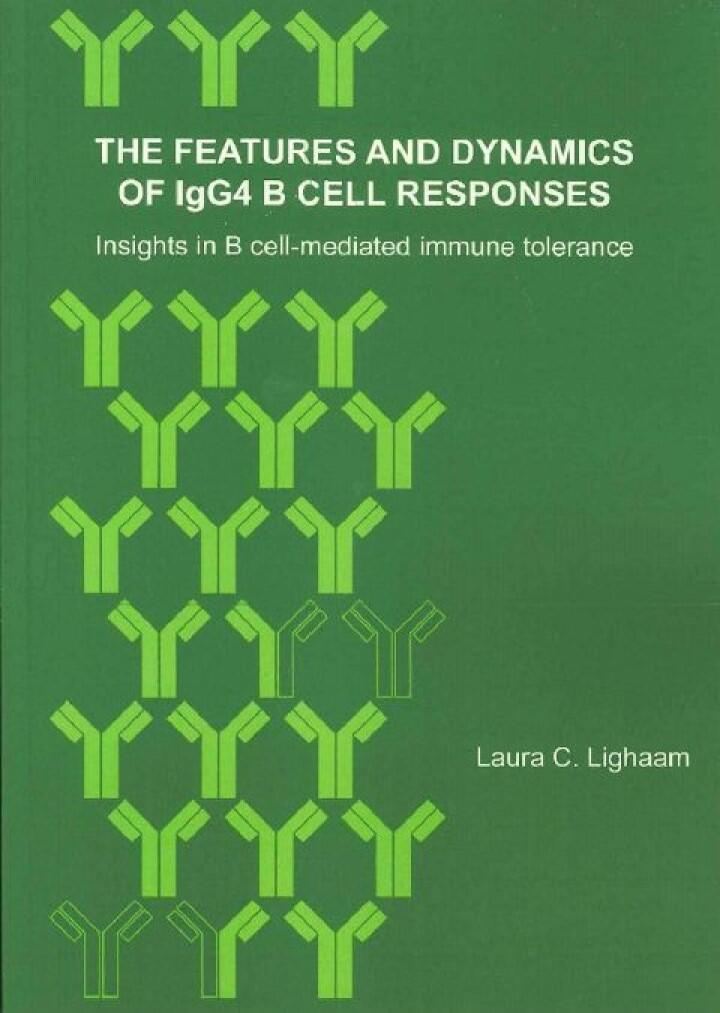Thesis Laura Lighaam
On 27 September 2024 Laura Lighaam defended her PhD thesis 'The features and dynamics of lgG4 B cell responses: lnsights in B cell-mediated immune tolerance' at the University of Amsterdam.
Promotor: Prof SM van Ham PhD
Co-promotor: T Rispens PhD
Venue: Agnietenkapel, Unversity of Amsterdam
Abstract
B cells are traditionally known for their role in producing antibodies, but are more and more recognized for their involvement in immune regulation. This thesis focuses on IgG4 B cells, a unique subset involved in immune tolerance, and characterizes their behavior in comparison to other B cell subclasses, such as IgG1. By identifying a specific antibody capable of detecting IgG4 on the cell surface, the research offers new insights into the function and characteristics of these cells.
The findings reveal that IgG4 B cells, although a small fraction of the overall B cell population, are as capable of producing antibodies as IgG1 B cells. However, the IgG4 response tends to be shorter-lived, requiring continuous replenishment from the memory B cell pool. This transient nature might be linked to the distinct chemokine receptor profile of IgG4 B cells, which is influenced by IL-4 during class switch recombination. This profile appears to limit their localization in secondary lymphoid organs, contributing to their shorter-lived responses.
Furthermore, the role of IL-10-producing B cells in immune regulation is explored, challenging the notion that these cells represent a stable regulatory subset. Instead, IL-10 production in B cells may be a transient phase, possibly linked to IgG4 class switching, hinting at a complex relationship between humoral and cellular immune tolerance.
This thesis calls for more integrated research, highlighting the importance of studying immune responses in a broader context using advanced methods like systems biology, transcriptomics, and proteomics to better understand B cell-mediated immunity.
Chapter
Chapter 1
General introduction
Chapter 2
The immunobiology of lgG4 abstract
Chapter 3
lgG4-Related Fibrotic Diseases from an lmmunological Perspective: Regulators out of Control? abstract
Chapter 4
Phenotypic differences between lgG4+ and lgG1+ B cells point to distinct regulation of the lgG4 response abstract
Chapter 5
Divergent chemokine receptor expression and the consequence for human lgG4 B cell responses abstract
Chapter 6
Whole transcriptome analysis reveals differences in homing and migratory potential between lgG1 and lgG4 cells
Chapter 7
In vitro-induced human IL-10+ B cells do not show a subset-defining marker signature and plastically co-express IL-10 with pro-inflammatory cytokines abstract
Chapter 8
Summarizing discussion
Download
Download PhD thesis (university repository)
